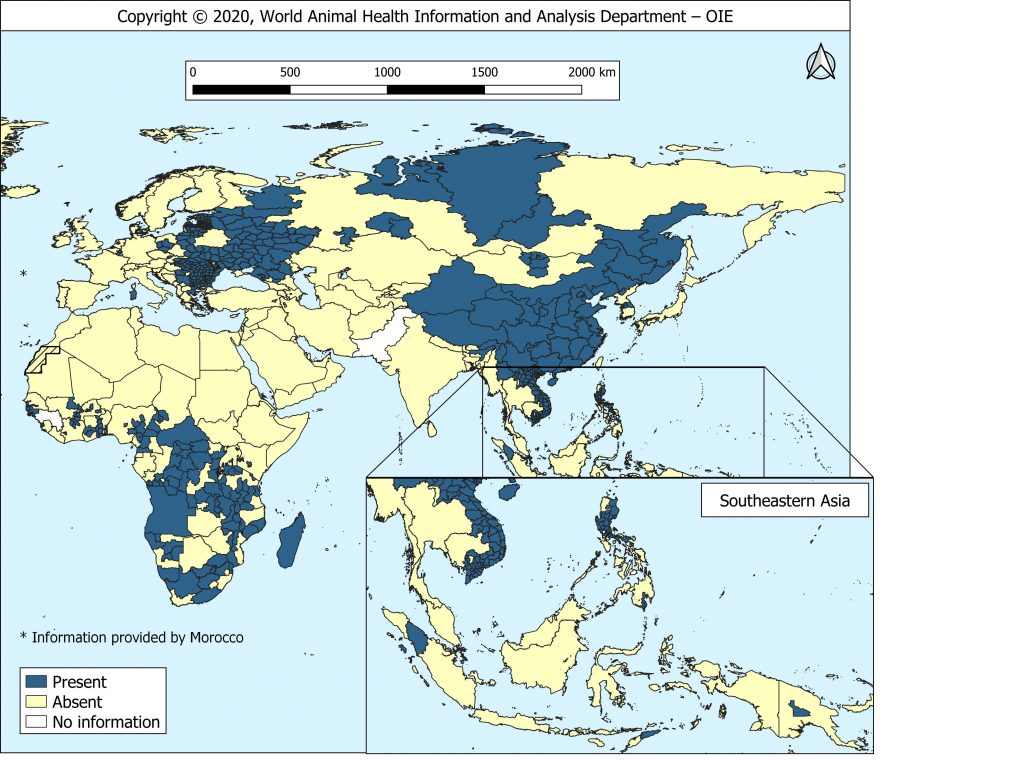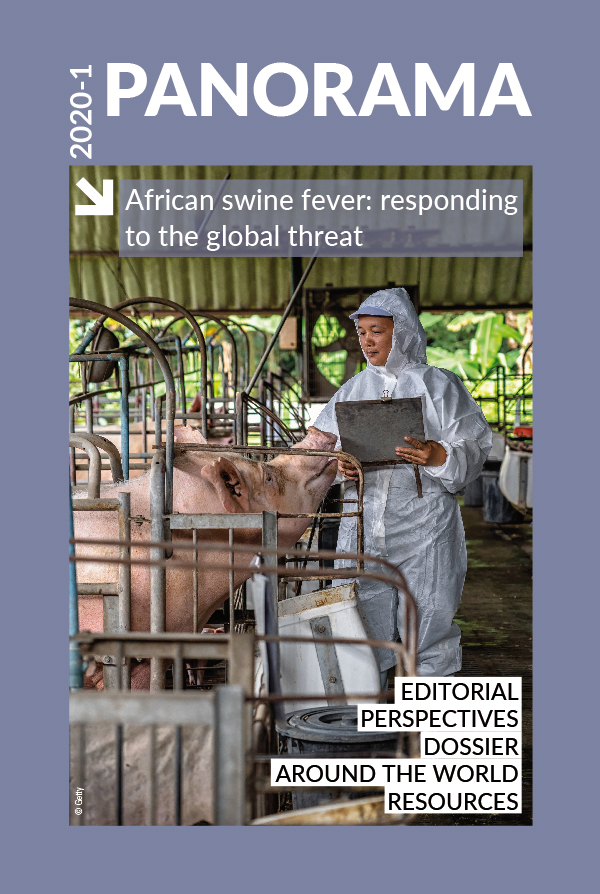Perspectives Posted on 2020-07-07 10:14:06
Opinions and strategies
African swine fever and the World Animal Health Information System
Keywords
Authors
World Animal Health Information and Analysis Department, World Organisation for Animal Health (OIE).
The recent global distribution of the disease during the period from 2016 to 2020 (as of 18 June) is depicted in Figure 1.
Since 2005, ASF has spread across 66 countries on three continents (Africa, Asia and Europe). Specifically, as of June 2020, 32 countries in Africa,(1) 20 countries in Europe(2) and 14 countries in Asia(3) have notified this disease to the World Organisation for Animal Health (OIE).

In this context, the World Animal Health Information System (WAHIS) of the OIE has been essential to centralise, verify and publish information on the occurrence of ASF outbreaks, provided by national Veterinary Authorities, in a timely manner. In 2020,(4) 27% of all the immediate notifications submitted to the OIE were for ASF.
Through WAHIS, the OIE informs the international community on the evolution of the disease situation, through alert messages, weekly follow-up reports, weekly regional epidemiological bulletins for Asia, and fortnightly global epidemiological bulletins. In addition, to ensure transparency in disease reporting, the OIE has established an active search of unofficial information, improving the transparency and timeliness of reporting by countries.
________________________________________
(1) Angola, Benin, Burkina Faso, Burundi, Cabo Verde, Cameroon, Central African Republic, Chad, Congo (Democratic Rep. of), Congo (Rep. of), Côte d’Ivoire, Ethiopia, Gambia, Ghana, Guinea-Bissau, Kenya, Madagascar, Malawi, Mali, Mauritius, Namibia, Nigeria, Rwanda, Senegal, Sierra Leone, South Africa, Tanzania, Togo, Uganda, Zambia, Zimbabwe. Source: WAHIS, 2020.
(2) Armenia, Azerbaijan, Belarus, Belgium, Bulgaria, Czech Republic, Estonia, Georgia, Greece, Hungary, Italy, Latvia, Lithuania, Moldova, Poland, Romania, Russia, Serbia, Slovakia, Ukraine. Source: WAHIS, 2020.
(3) Cambodia, China (People’s Rep. of), Hong Kong (Special Administrative Region of the People’s Rep. of China), India, Indonesia, Korea (Dem. People’s Rep. of), Korea (Rep. of), Laos, Mongolia, Myanmar, Papua New Guinea, The Philippines, Timor-Leste, Vietnam. Source: WAHIS, 2020.
(4) To 24 June 2020.
http://dx.doi.org/10.20506/bull.2020.1.3118
| More information about the OIE World Animal Health Information System (WAHIS) |
| Access the WAHIS interface |
References
- World Organisation for Animal Health (OIE) (2018). – Chapter 3.8.1. African swine fever (infection with African swine fever virus). In Manual of Diagnostic Tests and Vaccines for Terrestrial Animals, 8th edition.












